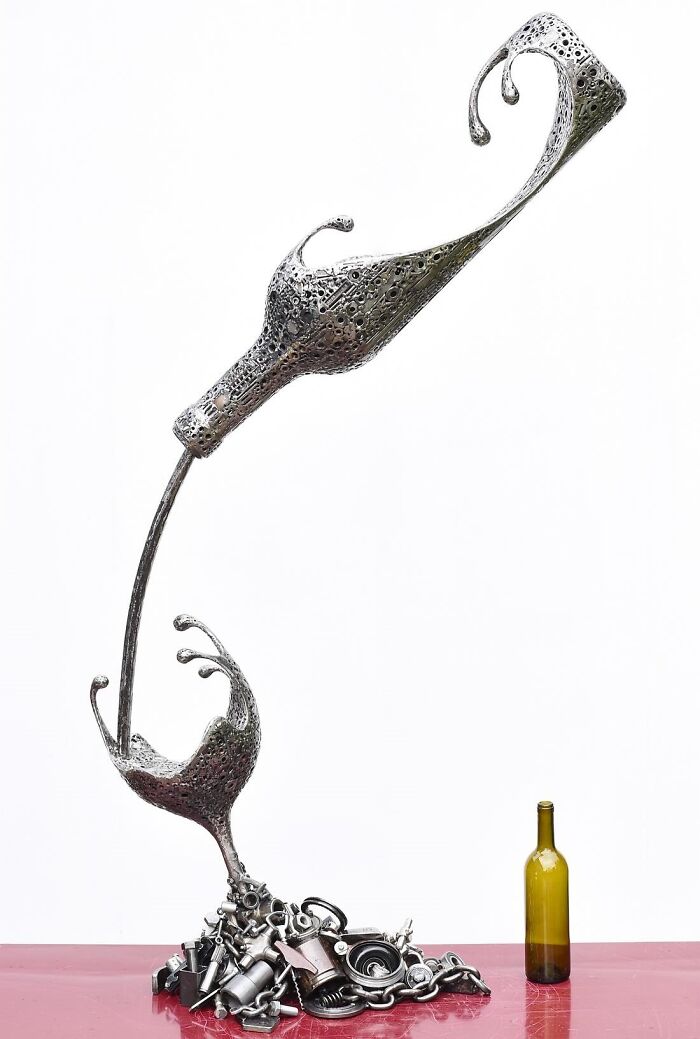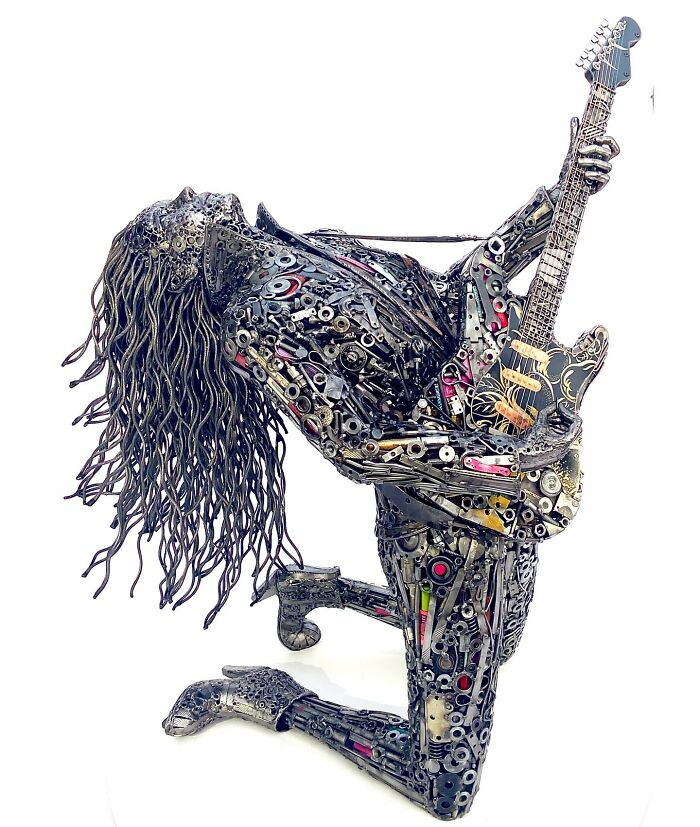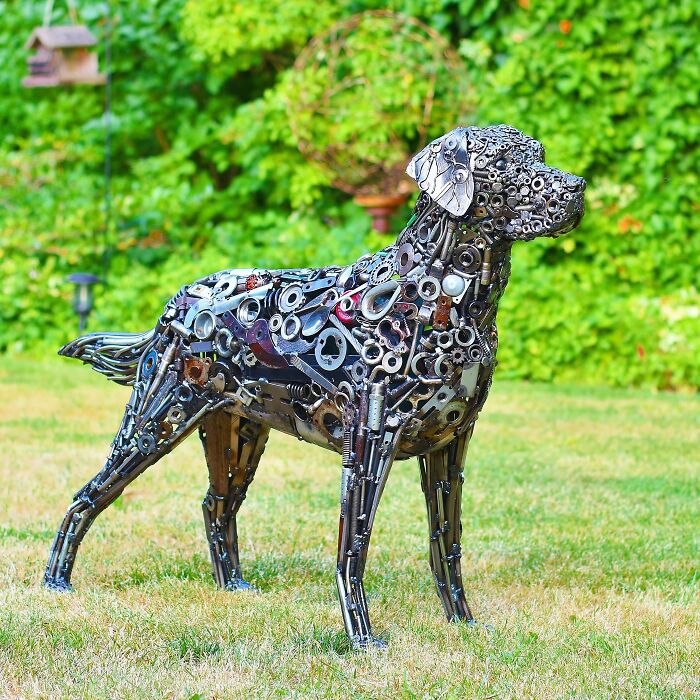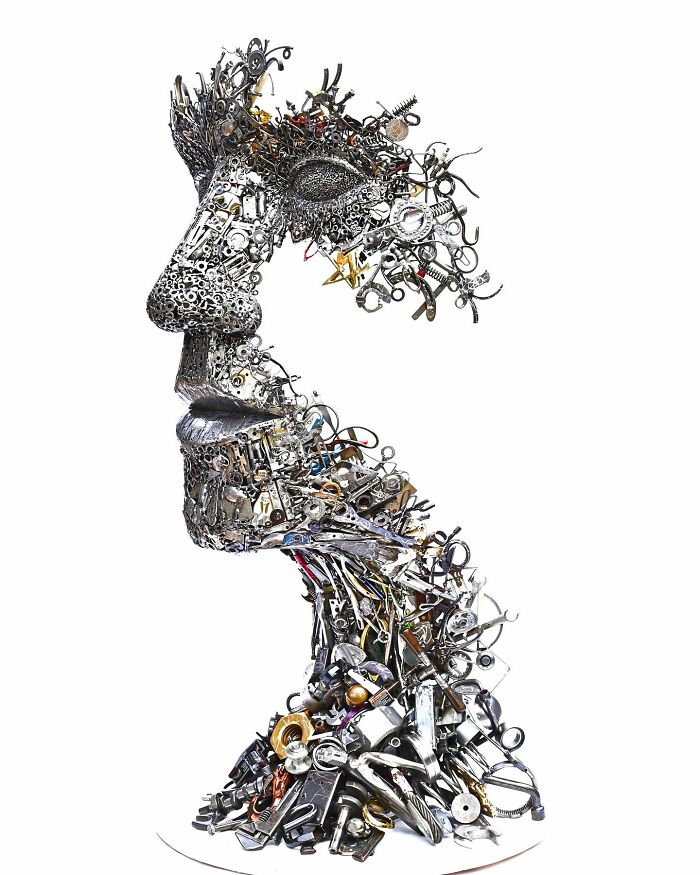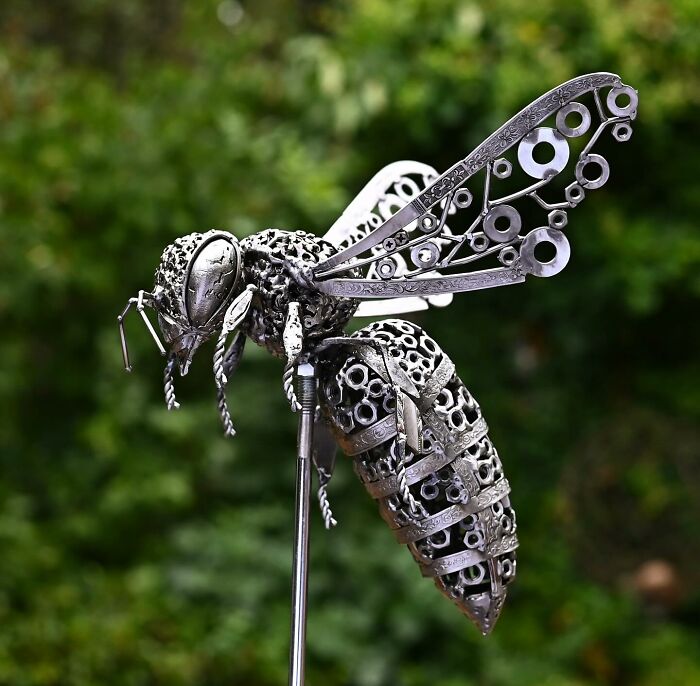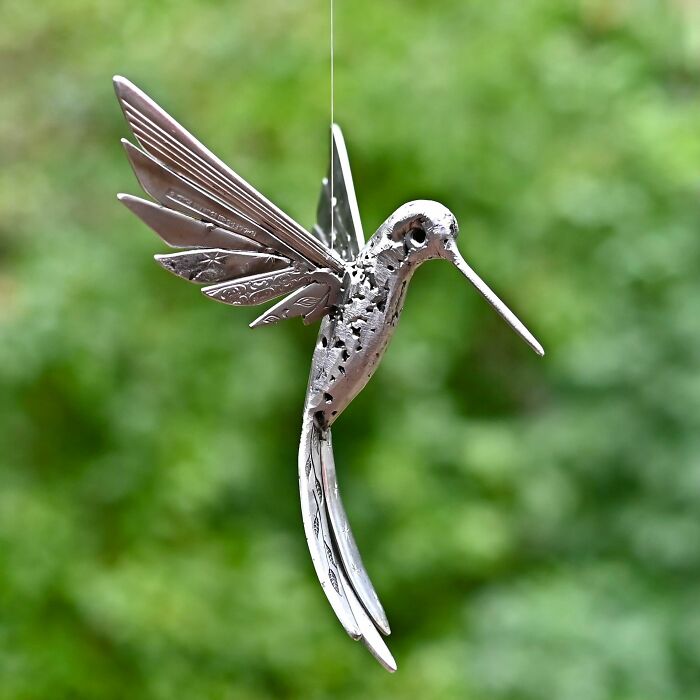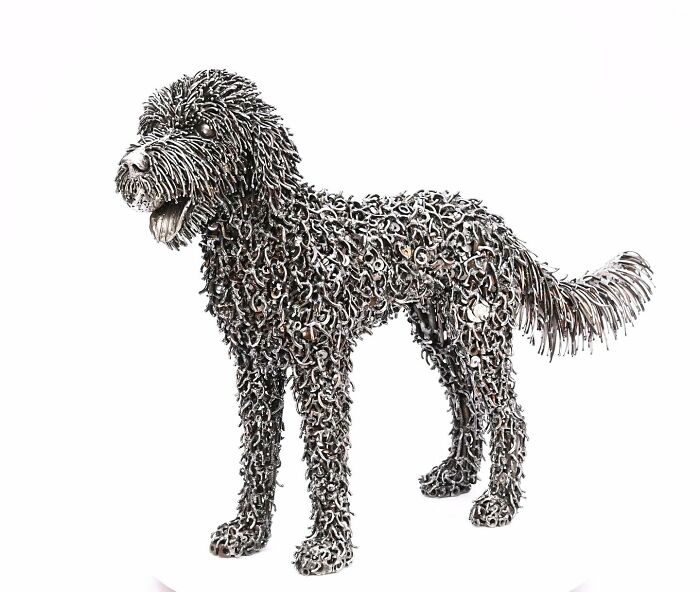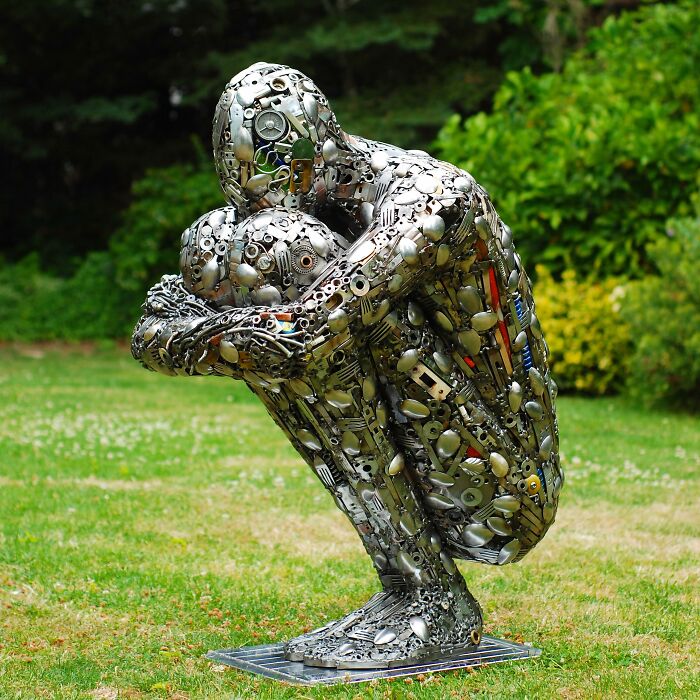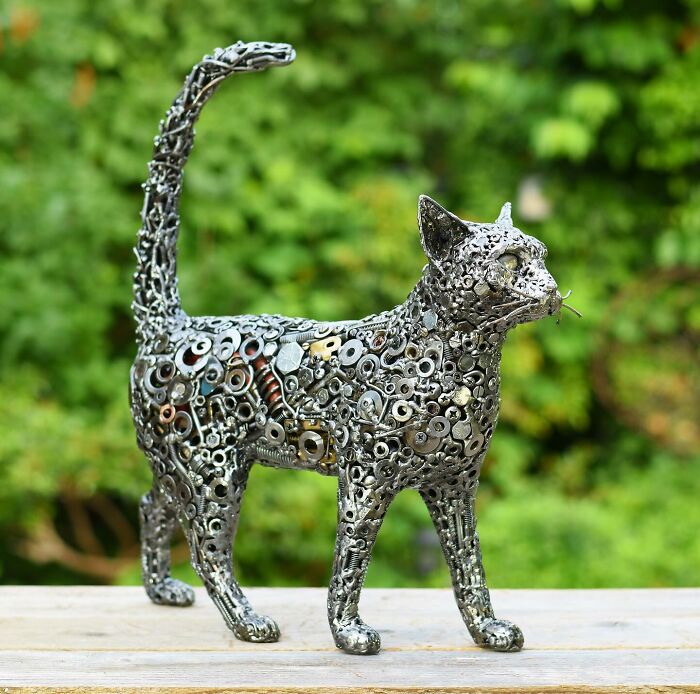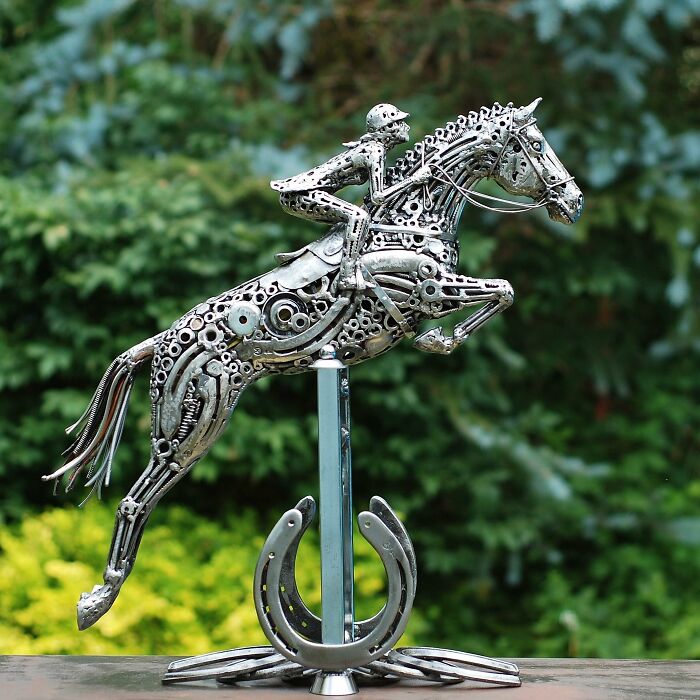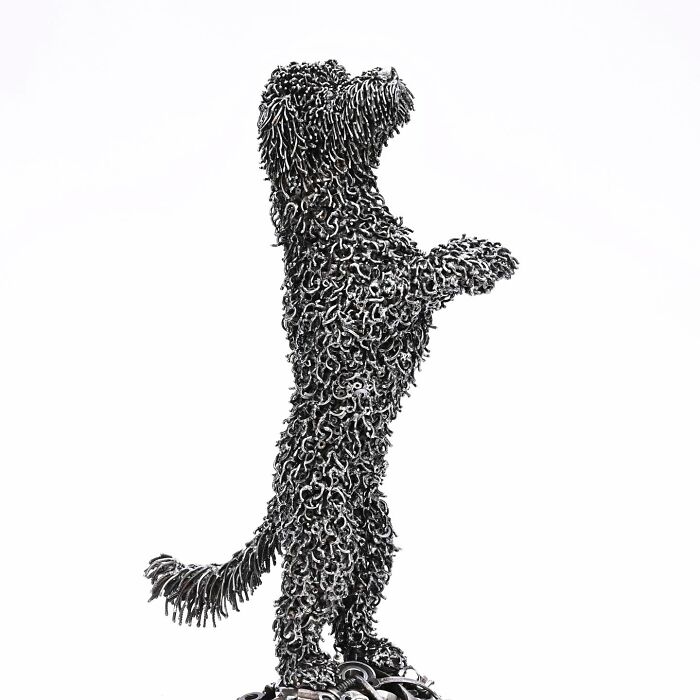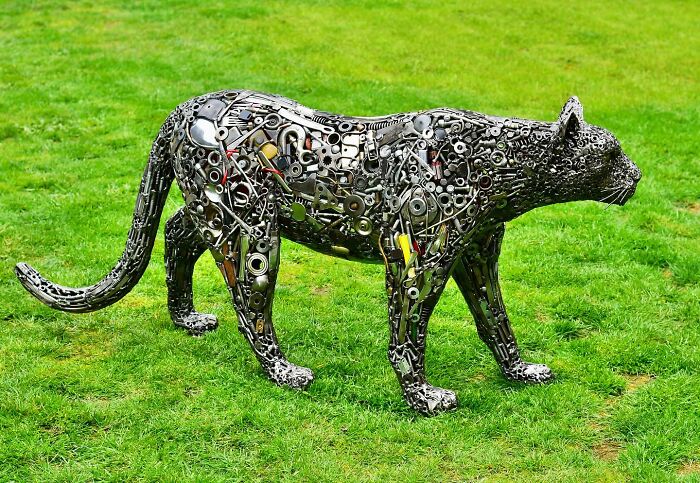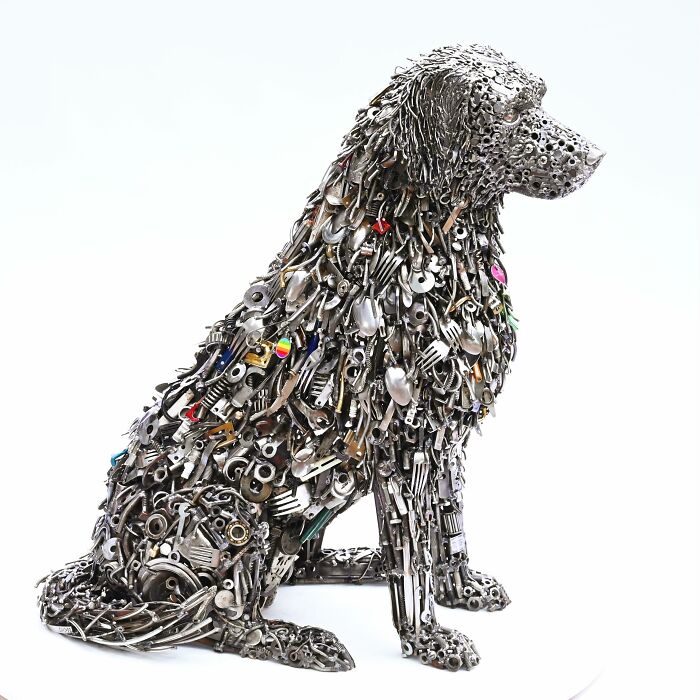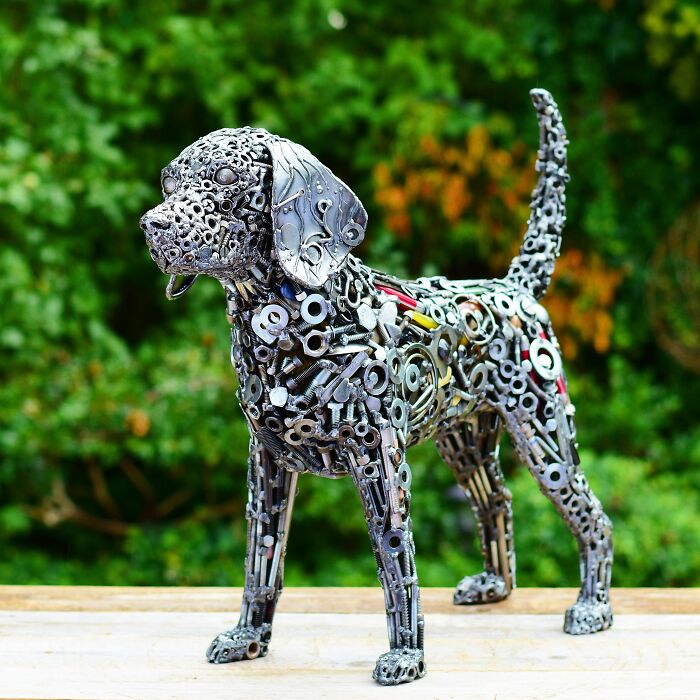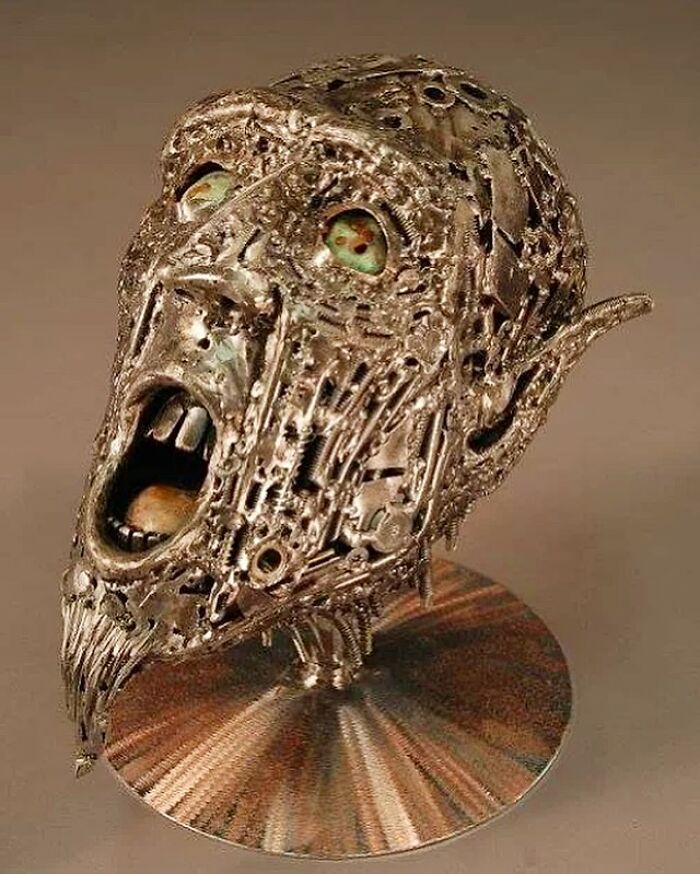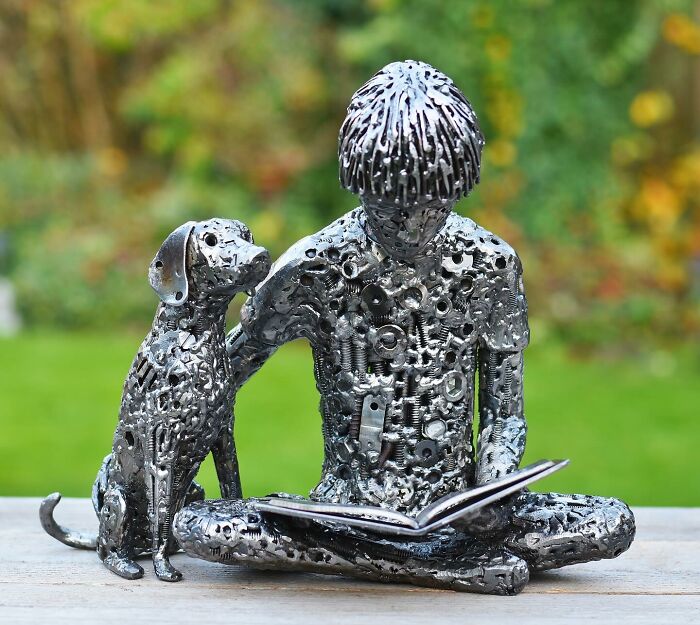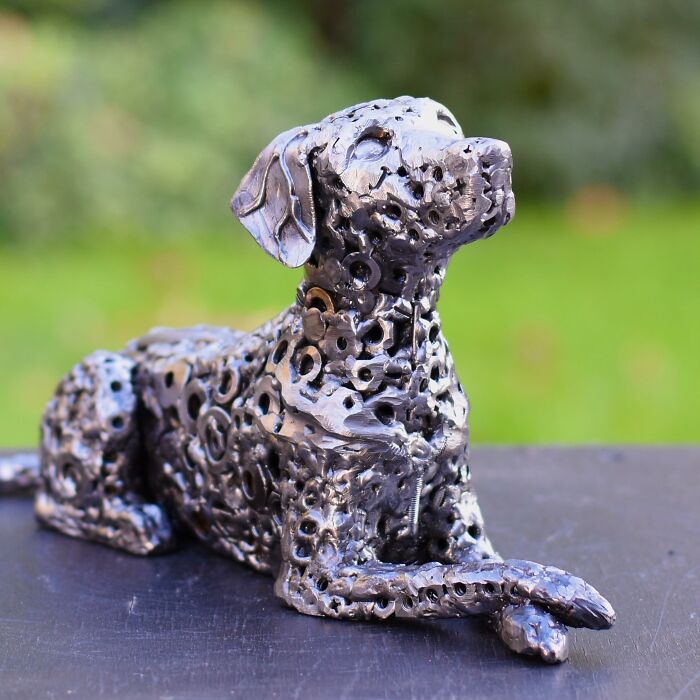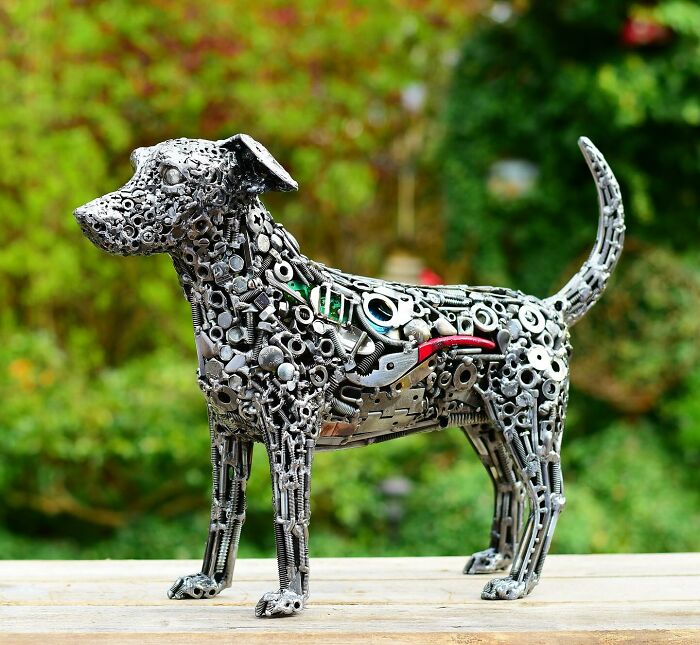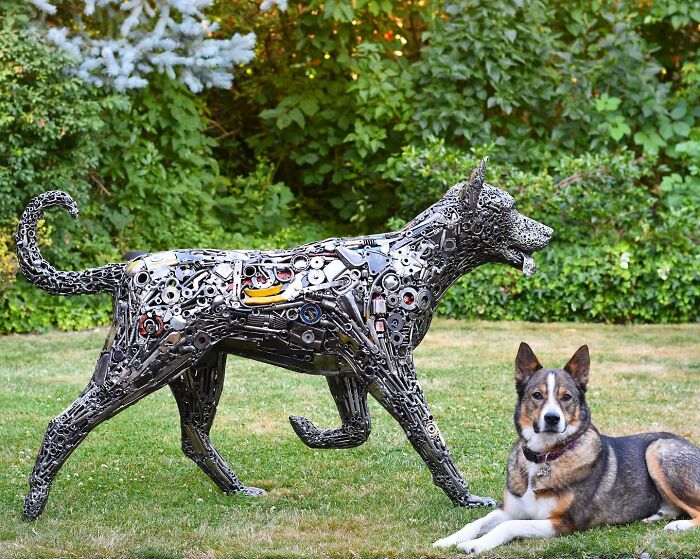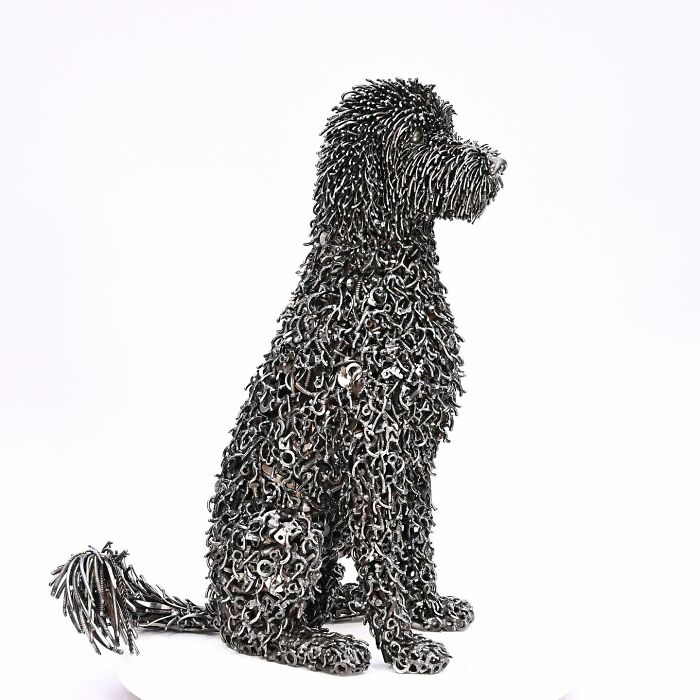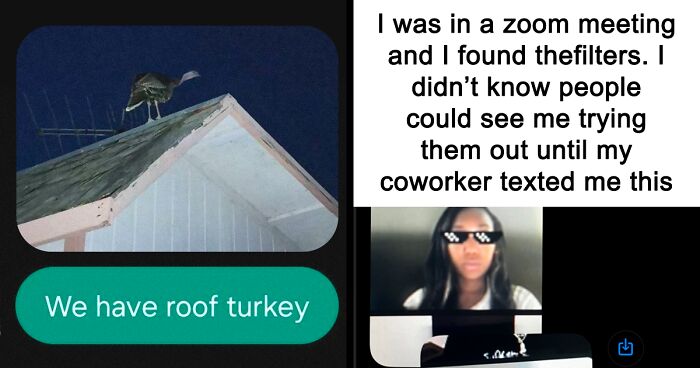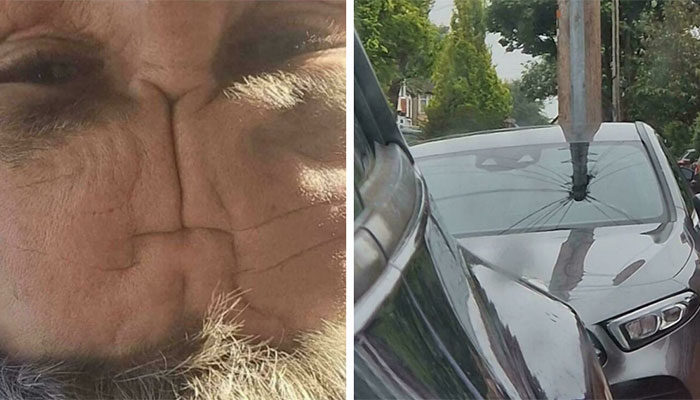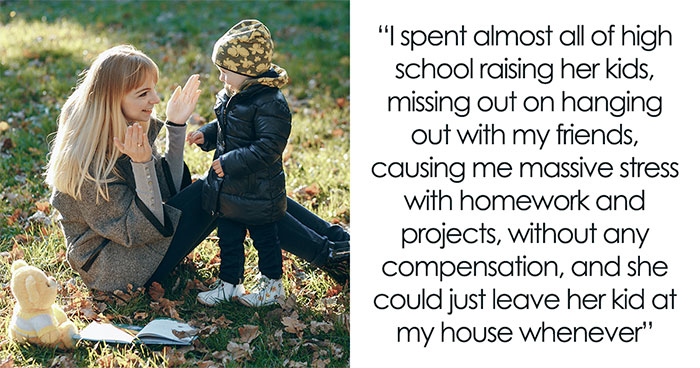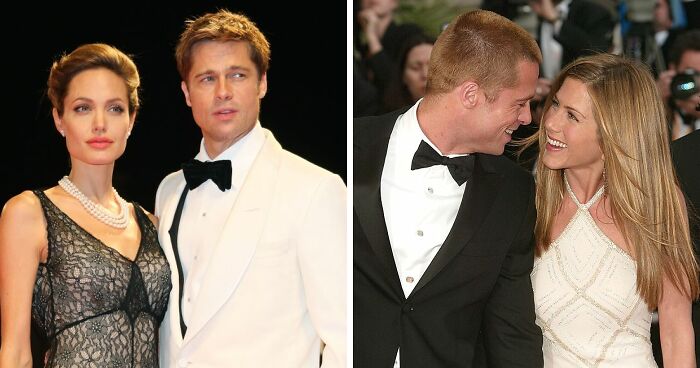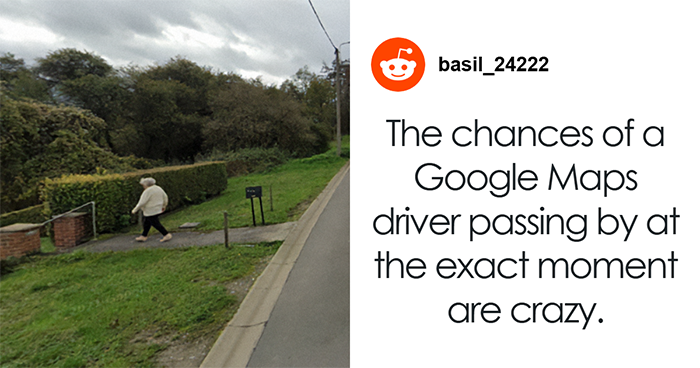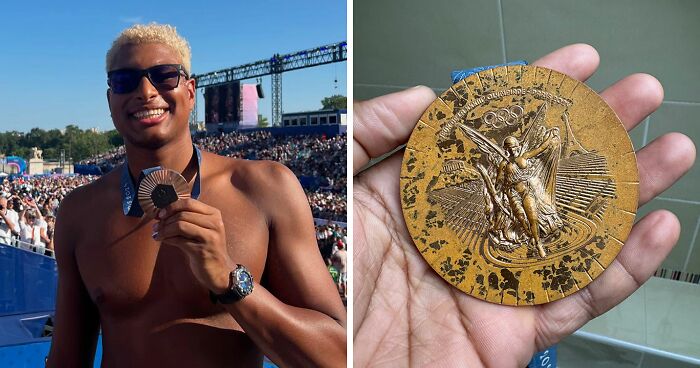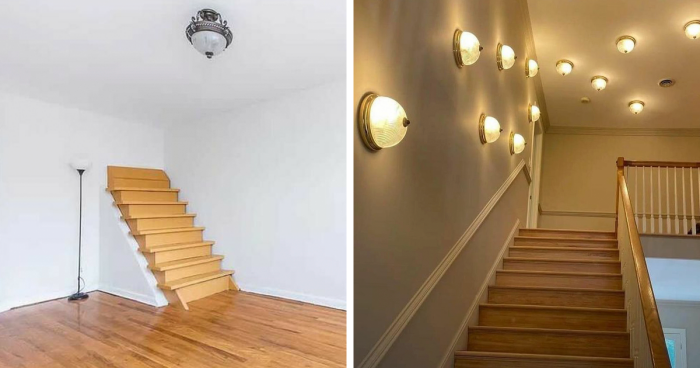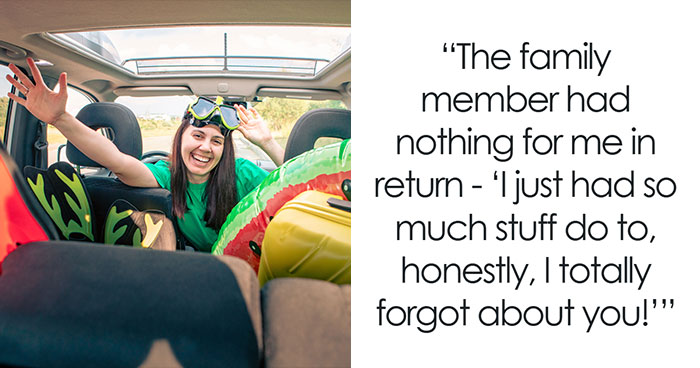In a world of waste, Oregon-based artist Brian Mock is paving the way toward sustainability—one sculpture at a time. Over his career, Mock has rescued 20-30 tons of discarded metal from landfills, transforming everything from forks and screws to car parts into intricate works of art that captivate and inspire.
You might remember the artist from our earlier posts, but in case you missed them, we highly recommend checking them out. With every post featuring Brian’s work, the sculptor continues to grow his fanbase within our Bored Panda community.
Scroll down to see the latest additions to Mock’s collection, and let us know in the comments which of the sculptures impressed you the most!
More info: Instagram | brianmock.com | Facebook | x.com
This post may include affiliate links.
I've seen a lot of recycled metal art, but this guy takes it to the next level.
Bored Panda wanted to gain more insight into the sculptor's work, so we reached out to him with some new interview questions. This time, we were curious about how the artist sources the materials for his pieces. Brian explained: “I've crushed my own scrapyard at this point, after decades of collecting from local machine and auto shops, and people who contact me when they have stuff to unload.”
We also learned more about some of the memorable discoveries the sculptor has made while sourcing materials: “There have been lots of neat finds along the way, like antique silverware and coins, a beautiful clock which I haven't been able to bring myself to dismantle yet.”
When asked about the most challenging objects to work with, Mock shared: “Aluminum is difficult because it’s not as easy to source as steel and it takes a different welder. I've made a few aluminum sculptures for a few outdoor installations, but I prefer not to work with it.”
Lastly, we were curious if Brian ever revisits any of his older pieces to rework them with the skills he has today. The artist said: “All the time! I have grown so much as a sculptor in the 25+ years since I started that I saw pieces from a decade ago that I wish I could ‘fix.’ But on the flip side, I also really appreciate those pieces for what they are, for where I was at the time, and as pieces of my growth as an artist.”
I like how he takes something heavy and clunky and makes it look light and kinetic.
They're all beyond spectacular, but this one's my favorite. His head! His tail! Just magnificent!
All those animals look as if they start moving any moment. Beyond impressive.
I'm amazed at the personality and expression in the faces of each animal. Spectacular! Absolutely inspiring!
The static and stability issues involved in some of these magnificent sculptures qualify them as demonstration pieces in senior-level physics/architecture lectures. 10/10
All those animals look as if they start moving any moment. Beyond impressive.
I'm amazed at the personality and expression in the faces of each animal. Spectacular! Absolutely inspiring!
The static and stability issues involved in some of these magnificent sculptures qualify them as demonstration pieces in senior-level physics/architecture lectures. 10/10

 Dark Mode
Dark Mode 

 No fees, cancel anytime
No fees, cancel anytime 



